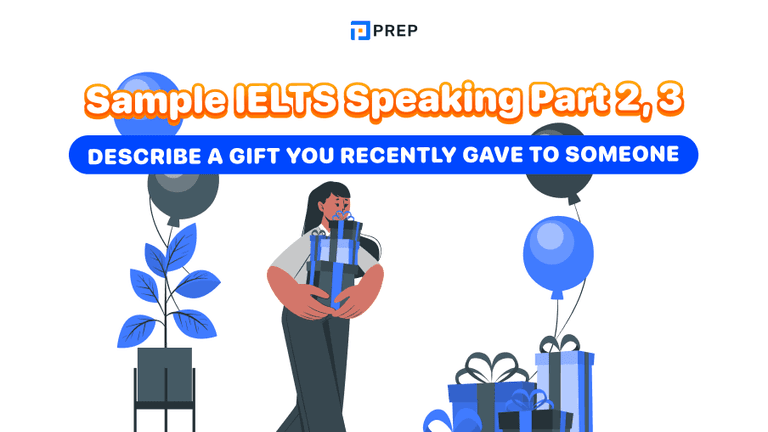Tactics for Listening Book Review and Study Guide
The Tactics for Listening series by Jack C. Richards is a three-level course published by Oxford University Press. Covering Basic, Developing, and Expanding stages, it helps learners strengthen listening comprehension, expand vocabulary, and build confidence for real-life English communication.

I. Overview of the Tactics for Listening Book
Tactics for Listening is a well-known, three-level listening practice series designed to help English learners improve their listening comprehension through real-life topics and authentic contexts. Written by Jack C. Richards, one of the most respected authors in English language teaching, the series focuses entirely on developing listening skills for practical and academic purposes.
Book Information:
|
The series is suitable for both self-study and classroom use, and each book includes audio materials and practical exercises to help learners understand spoken English more accurately and fluently.
Tactics for Listening is widely used in English programs and has remained a trusted resource for learners who want to build real-world listening ability in a progressive, level-based format.

If you’re preparing for IELTS, review the IELTS Listening test format to align your practice with exam requirements.
1. Inside the Book – Structure, Levels, and Units
Tactics for Listening is thoughtfully designed to support learners at different stages of English listening development through a three-level format. Each level builds upon the previous one, allowing for steady and measurable progress in listening comprehension.
Three Progressive Levels of the Series
-
Basic Tactics for Listening
-
Suitable for beginner-level learners (CEFR A1–A2).
-
Focuses on slow, clear speech with familiar vocabulary and everyday topics.

Basic Tactics for Listening
-
-
Developing Tactics for Listening
-
Ideal for pre-intermediate learners (CEFR B1).
-
Introduces more complex sentence structures and realistic speaking speeds.

Developing Tactics for Listening
-
-
Expanding Tactics for Listening
-
Designed for intermediate to upper-intermediate learners (CEFR B1+–B2).
-
Covers longer conversations, faster speech, and more nuanced listening tasks.

Expanding Tactics for Listening
-
Each level consists of approximately 24–28 units, with every unit centered on a practical theme such as travel, health, shopping, or education. This thematic approach helps learners build vocabulary alongside listening strategies.
-
For daily drills, use curated English listening practice sessions.
Unit Structure and Types of Activities
Each unit follows a clear, predictable format to enhance autonomous learning:
- Pre-listening tasks: Activate background knowledge and introduce key vocabulary.
- Listening activities: Short conversations, interviews, or announcements with multiple-choice, fill-in-the-blank, or note-taking exercises.
- Post-listening tasks: Discussion questions or personalization prompts to practice using information heard.
- Audio included: All units are supported by professionally recorded audio materials, featuring natural-sounding American English.
The structure of the series makes it ideal for use in ESL classrooms or for independent practice, giving learners exposure to a broad range of accents, topics, and task types that reflect real-life communication settings.
2. Pros and Cons of Using Tactics for Listening
Tactics for Listening has been widely adopted in both classroom and self-study contexts thanks to its structured approach and accessible content. However, like any learning resource, it has strengths and limitations that learners should be aware of before choosing to use it.
Pros
- Clear level progression: With three levels (Basic, Developing, Expanding), learners can start at their current proficiency and gradually improve.
- Real-life topics and context-based listening: The book focuses on everyday conversations, making it highly relevant to real-world communication.
- Simple, logical unit structure: Each unit follows a predictable and user-friendly pattern, which helps improve learning efficiency.
- Diverse activity types: Includes multiple-choice, short answers, note-taking, and personal response tasks that target different listening sub-skills.
- Useful audio recordings: High-quality, natural-speed recordings with clear American English accents support realistic listening practice.
- Works for both classroom and self-study: Especially the versions that include an answer key.
Cons
- Limited skill coverage: The book focuses solely on listening, so learners will need additional materials to develop speaking, reading, or writing skills.
- No strong focus on test-specific strategies: While great for general listening improvement, it isn’t designed specifically for IELTS or TOEIC preparation.
- May feel repetitive for some learners: The uniform structure, while helpful, may seem monotonous over time without teacher-guided adaptation.
- Digital resources may vary by edition: Not all editions include online access or CD audio, depending on where it's purchased.

Tactics for Listening is ideal for:
- Learners at a beginner to intermediate level who are aiming to improve practical listening comprehension.
- Students in general English programs who need structured listening input.
- Self-learners looking for a guided and manageable way to build listening skills in a progressive format.
- Teachers who want flexible listening materials to use in skills-focused classes.
It may not be the best choice for advanced learners or those looking for intensive exam training, but for everyday listening fluency, it is a strong, reliable option.
II. How to Use the Book Effectively?
While Tactics for Listening is designed to be user-friendly and accessible, applying a structured learning method will help you get the most out of each unit. Whether you're studying alone or with a teacher, having a clear plan will boost your listening skills more efficiently.
Suggested Study Timeline (4–6 Weeks per Level)
To complete each level of the series at a comfortable pace, consider the following plan:
- Study 3–4 units per week, depending on your available time and language goals.
- Spend 30–45 minutes per unit: including pre-listening, listening, reviewing answers, and revisiting difficult sections.
- After every 5–6 units, take a day to review new vocabulary and listen again without looking at the script.
- Track your progress in a listening journal by noting common mistakes and vocabulary learned.
This timeline works well for both short-term skill improvement and long-term listening fluency.
-
For extra strategies, check these IELTS Listening tips to maximize progress.

Combine with Vocabulary Practice and Shadowing
To reinforce listening input and improve speaking skills at the same time:
- Keep a topic-based vocabulary notebook: After each unit, list 5–10 useful words or expressions you heard.
- Practice shadowing: Listen to short segments and try to repeat aloud immediately after the speaker, imitating tone, stress, and pronunciation.
- Use transcripts wisely: First, listen without reading. Then, listen again while following the script to confirm your understanding.
This dual practice helps strengthen both recognition and output—essential for real communication.
Mistakes to Avoid During Listening Practice
Many learners struggle with listening not because of difficulty, but because of unproductive study habits. Avoid these common pitfalls:
- Listening only once: Important sections should be replayed to catch missed details or practice pronunciation.
- Trying to understand every word: Focus on meaning, not perfection. Training your ear to guess from context is a valuable skill.
- Ignoring new vocabulary: If you skip words you don’t know, you’ll miss a chance to grow your comprehension range.
- Skipping review: Listening once is not enough—regular, spaced repetition is key to retention.
III. Where to Buy the Tactics for Listening Book?
If you're ready to begin practicing with Tactics for Listening, it's essential to purchase an official edition to ensure the best learning experience. Buying from trusted retailers guarantees that you’ll receive the complete version—including the audio materials, scripts, and exercise content—without missing or distorted sections.
Official Bookstores and Online Platforms
Here are some reputable places where you can buy the Tactics for Listening series:
- Oxford University Press (Official Publisher: Available on the Oxford University Press website , where you can choose the latest editions, including printed books and digital formats.
- Amazon: Offers all three levels—Basic, Developing, and Expanding—with versions that include audio CDs or links to online resources. Be sure to check that the seller is verified and that the product details mention the inclusion of listening audio.
- International Book Retailers: Large online bookstores such as Book Depository, Barnes & Noble, or other academic distributors also stock the series with worldwide delivery options.
When buying, look for:
- Edition with audio (CD or online access)
- Answer key availability, especially if you're studying on your own
- Newest edition to ensure up-to-date content and clearer recordings
Beware of Illegitimate PDF Sources
Although you may come across free PDF or MP3 downloads of Tactics for Listening online, many of these are:
- Unofficial and unauthorized copies that violate copyright laws
- Outdated or incomplete, often missing important sections or poor in audio quality
- Potentially harmful, as some unofficial links come from unsafe websites or contain malware
To protect your device, your learning quality, and the work of authors and publishers, it’s highly recommended to avoid pirated content. Instead, look for:
- Sample pages or audio previews on official publisher websites
- Licensed eBooks or companion apps, which some versions now offer
Purchasing a legitimate edition ensures that you're getting the full learning package, with high-quality recordings and exercises that match your goals.
IV. Master IELTS Skills for a High Band Score
Studying and preparing for the Listening test at home becomes effortless and accelerates improvement in English listening skills when coupled with consistent practice using the Tactics for Listening book. If IELTS feels overwhelming, our step-by-step courses can make it easy:
-
IELTS course: Master Every Section of IELTS

Hi I'm Chloe, and I am currently serving as an Product Content Administrator at Prep Education. With over five years of experience in independent online IELTS study and exam preparation, I am confident in my ability to support learners in achieving their highest possible scores.
Comment
Premium content
View allPersonalized roadmap
Most read












